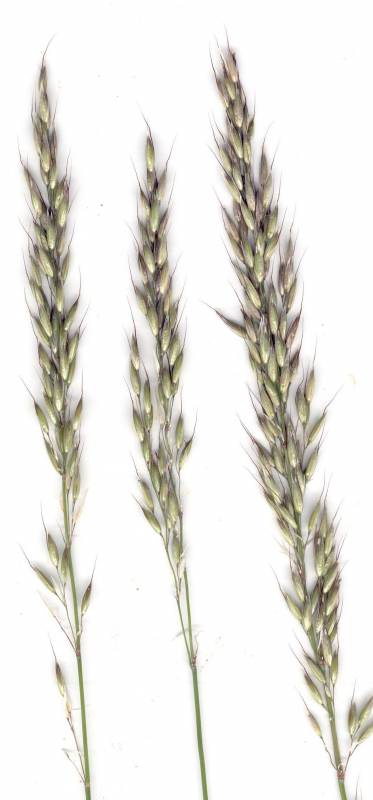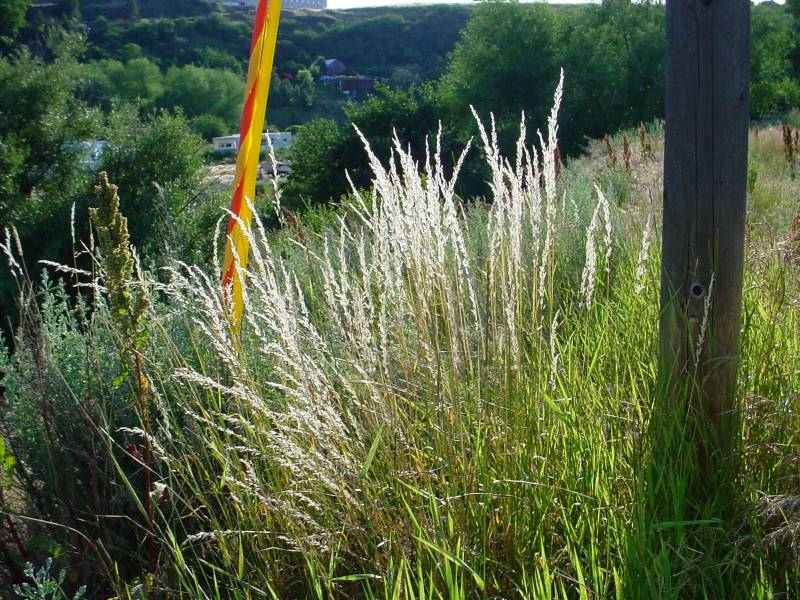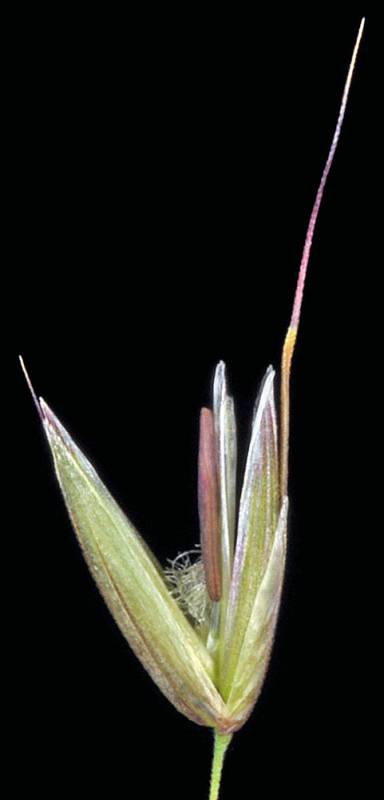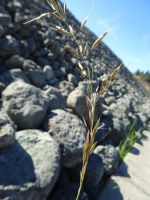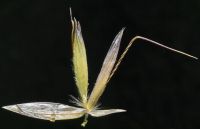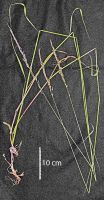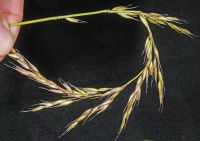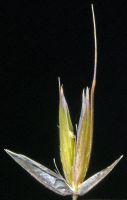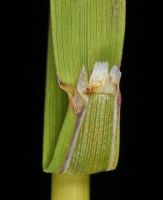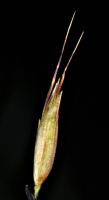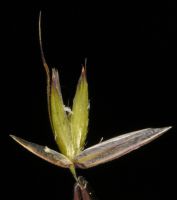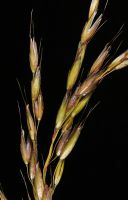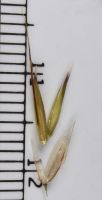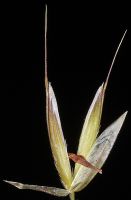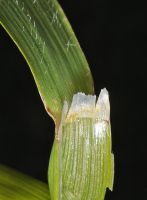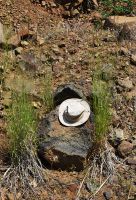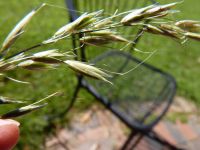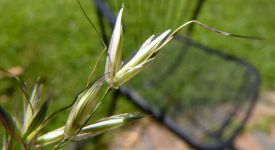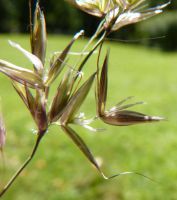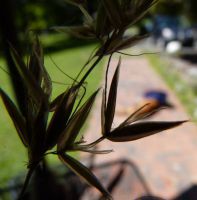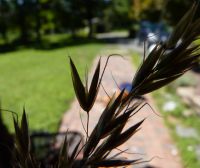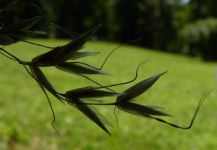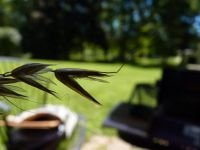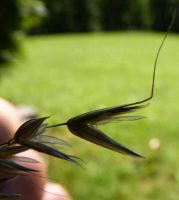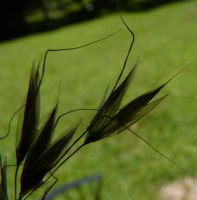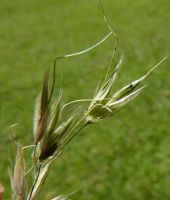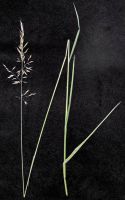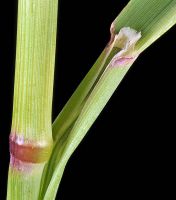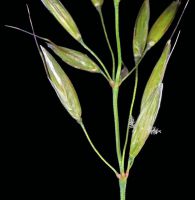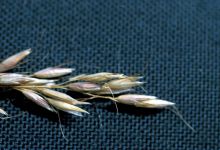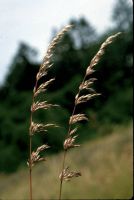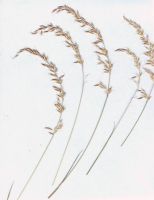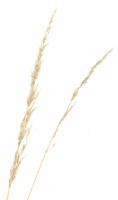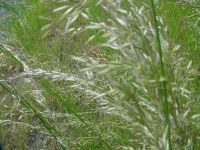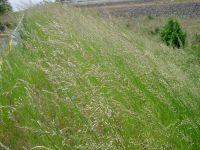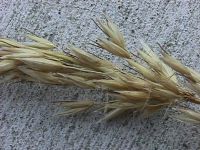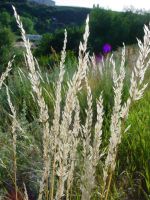Distribution: Occurring on both sides of the Cascades crest in Washington; Alaska to California, east across most of North America to the Atlantic Coast.
Habitat: Meadows, balds, pastures, fields, roadsides, wastelots, and other disturbed areas.
Flowers: May-July
Origin: Introduced from Europe
Growth Duration: Perennial
Conservation Status: Not of concern
Pollination: Wind
Tall perennials, the culms hollow, 8-15 dm. tall, the bases enlarged, often rooting at the first few nodes, but erect, not rhizomatous.
Sheaths open, smooth; ligules 1-2 mm. long, truncate; blades 8-10 mm. broad, scabrous and often with long hairs.
Inflorescence a narrow, shining panicle 1-3 dm. long; spikelets 2- flowered, the lower flower staminate, the upper perfect; articulation above the glume; glumes papery, keeled, unequal, the first 5-7 mm. long, 1-nerved, the second 7-10 mm. long, 3-nerved; lemmas bearded on the callus, 7-nerved, that of the first flower with a stout, twisted, strongly-bent awn 10-20 mm. long, attached about mid-length; lemma of the second flower with a subterminal, straight awn up to 6 mm. long; paleas about equal to the lemmas; rachilla prolonged as a bristle behind the upper palea; stamens 3; lodicules 2, linear, 2.5-3.5 mm. long.
Utricle
Publication: Fl. Cech. 17. 1819.
Arrhenatherum elatius (L.) P. Beauv. ex J. Presl & C. Presl ssp. elatius [HC2]
Arrhenatherum elatius (L.) P. Beauv. ex J. Presl & C. Presl var. biaristatum (Peterm.) Peterm.
Avena elatior L.
PNW Herbaria: Specimen records of Arrhenatherum elatius in the Consortium of Pacific Northwest Herbaria database.
WA Flora Checklist: Arrhenatherum elatius checklist entry.
OregonFlora: Arrhenatherum elatius information.
E-Flora BC: Arrhenatherum elatius atlas page.
CalPhotos: Arrhenatherum elatius photos.
USDA Plants: Arrhenatherum elatius information.

